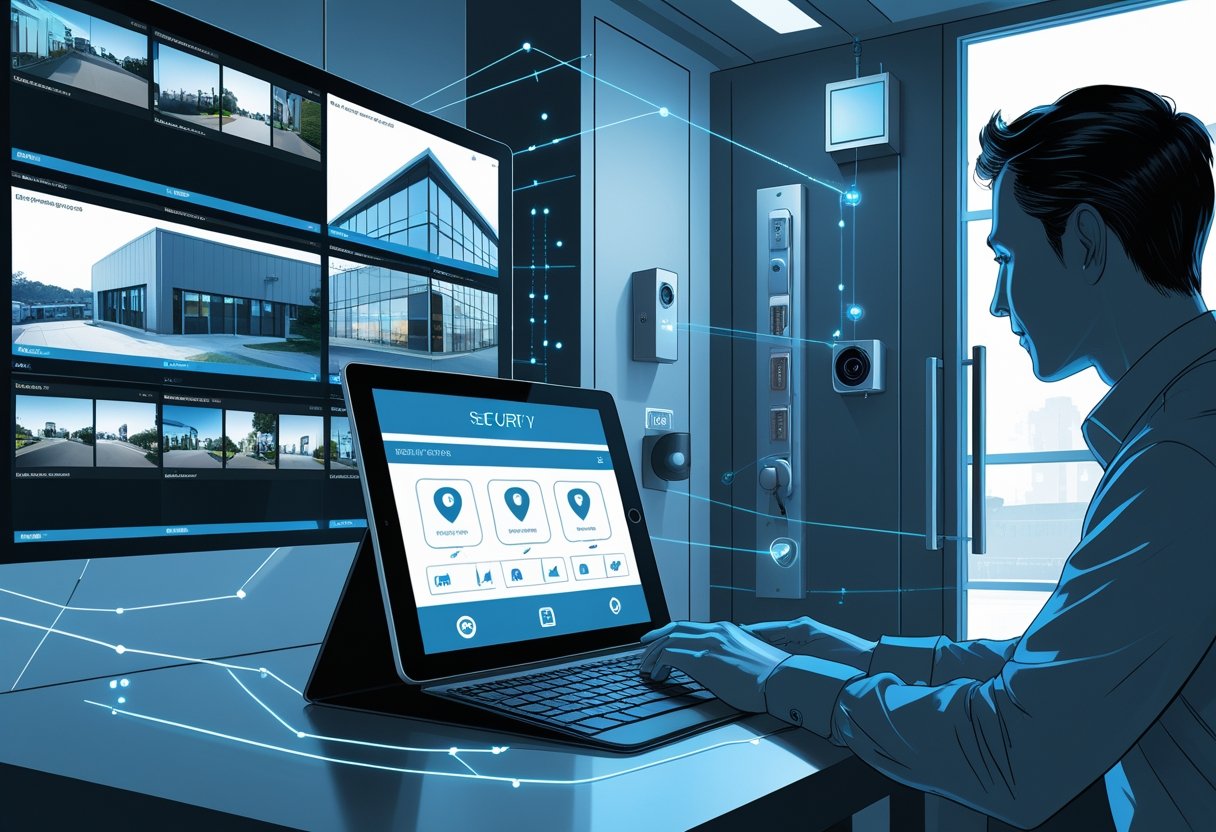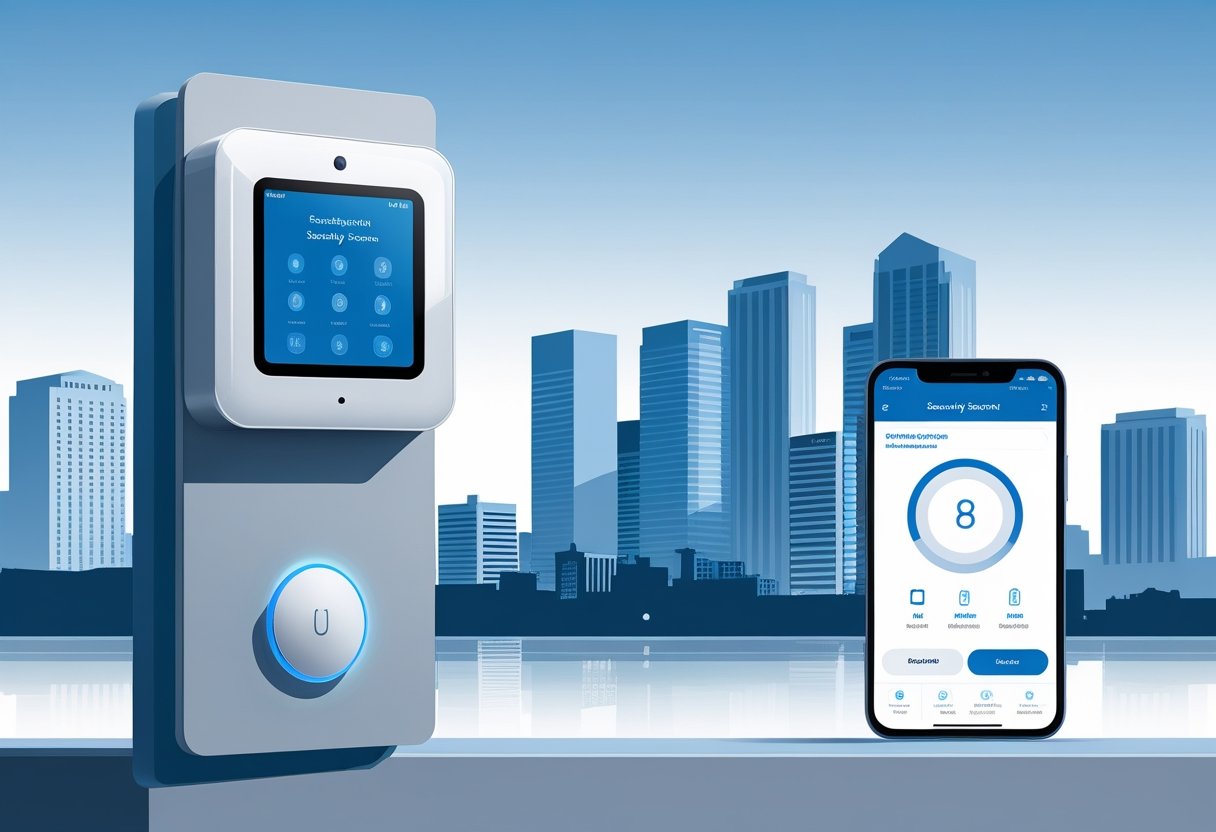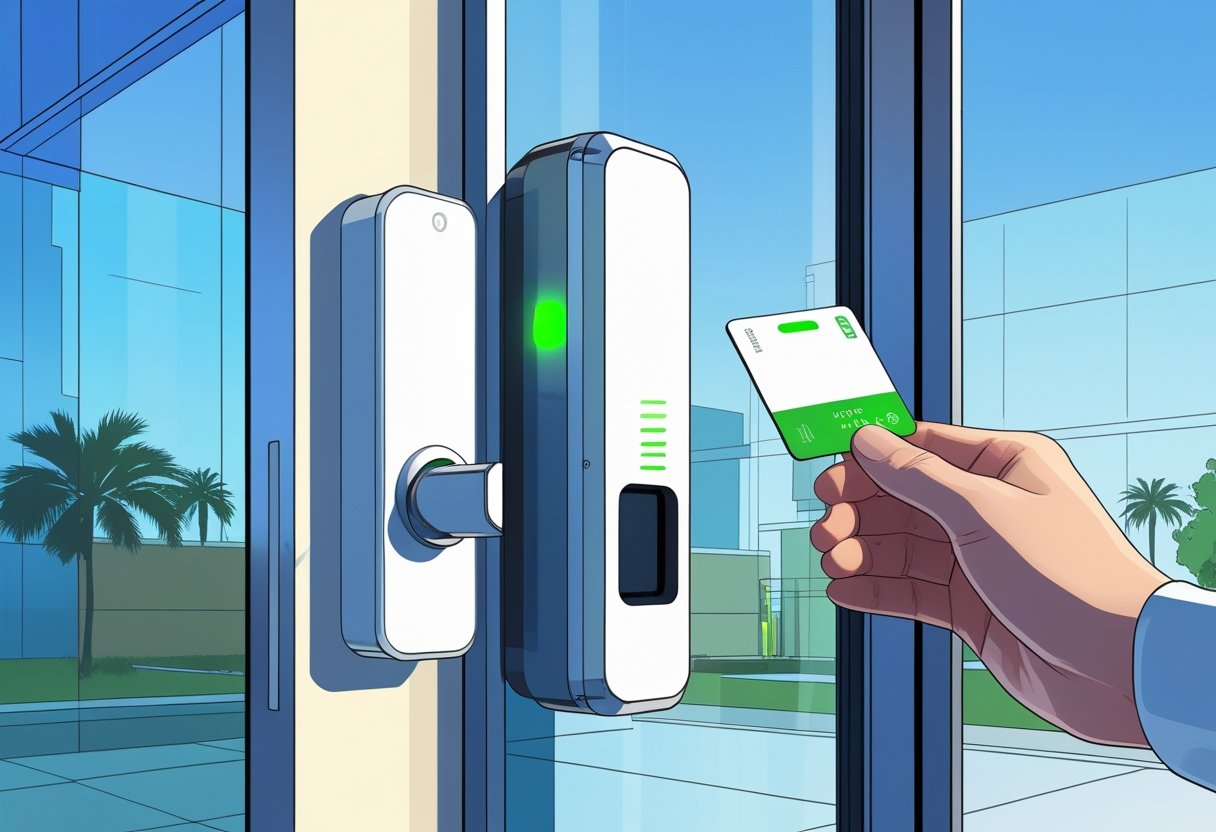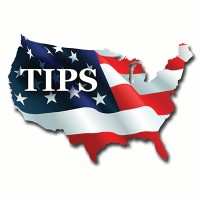In today's digital landscape, ensuring the security of your home or business has never been more critical. Remote access for security systems allows you to monitor and control your security measures from anywhere, providing peace of mind whether you're at work or on vacation. By implementing remote access, you can swiftly respond to security alerts, manage access permissions, and review camera footage, all from the convenience of your smartphone or laptop.
For residents and businesses in the greater Houston area, utilizing remote access technology not only enhances your security but also integrates seamlessly with modern automation systems. This technology employs encrypted connections and multiple layers of authentication to ensure that only authorized users can access sensitive resources.
As you explore how remote access can bolster your security systems, you'll discover effective strategies and best practices tailored to your needs. From selecting the right equipment to maintaining secure access, understanding these elements can empower you to protect your property more effectively.
Fundamentals of Remote Access for Security Systems
Remote access plays a crucial role in modern security systems, especially for businesses with remote workers. Understanding its core concepts, functionality, and benefits is vital for ensuring secure operations.
Definition and Core Concepts
Remote access refers to the ability to connect to a security system or network from a location outside the physical premise. This allows authorized users to manage and control security measures, including surveillance cameras and alarm systems, from anywhere.
Key components include:
- Authentication: Ensures that only verified users can access the system.
- Encryption: Secures data being transmitted over the internet, preventing unauthorized access.
- Access Control: Defines permissions for different users, specifying what parts of the system they can interact with.
These elements work together to create a secure environment for accessing and managing sensitive security functionalities.
How Remote Access Works in Security Systems
Remote access systems function through various technologies, primarily utilizing the internet. When you connect to your security system remotely, you typically use a secure web portal or an application specifically designed for remote management.
The process involves:
- Connecting to a Secure Network: You initiate a connection through a secure VPN (Virtual Private Network) or a dedicated app.
- User Authentication: Upon connection, the system verifies your credentials to ensure you’re authorized.
- System Control: Once authenticated, you can view feeds, receive alerts, or adjust settings.
This structured approach ensures that remote workers maintain productivity while safeguarding sensitive data and security integrity.
Benefits of Remote Access for Security
Remote access offers significant advantages for security systems, especially for those operating in the greater Houston area.
- Increased Flexibility: Security teams can monitor and respond to incidents from anywhere, enhancing response times.
- Cost Efficiency: Implementing remote access reduces the need for physical presence, minimizing travel and staffing costs.
- Enhanced Security: With advanced access control settings, you can customize permissions for different roles, further securing sensitive areas.
Utilizing remote access not only streamlines operations but also helps ensure that your security protocols remain robust and effective. This adaptability is especially beneficial for businesses that rely on remote workers to manage operations.
Secure Remote Access Technologies and Protocols
When implementing secure remote access for security systems, choosing the right technologies and protocols is critical. Understanding how Virtual Private Networks (VPNs) differ from Zero Trust Network Access (ZTNA), alongside the importance of Single Sign-On (SSO) and Multi-Factor Authentication (MFA), can significantly enhance your security posture.
Virtual Private Networks vs. Zero Trust Network Access
Virtual Private Networks (VPNs) create a secure tunnel between your device and the network, encrypting your data as it travels. They provide remote access but can expose organizations to security risks if not properly managed. VPNs rely on a trust model where once connected, users have access to the entire network.
Zero Trust Network Access (ZTNA), in contrast, operates on the principle of "never trust, always verify." This approach requires continuous authentication and authorization for every access request, reducing the risk of unauthorized access. ZTNA segments network resources, offering access only to what users need. This control limits exposure and enhances the security of sensitive information.
Single Sign-On and Multi-Factor Authentication
Single Sign-On (SSO) simplifies user access by allowing you to log in once to access multiple applications without needing to enter credentials repeatedly. This improves user experience and can reduce password fatigue.
Implementing Multi-Factor Authentication (MFA) is crucial to bolster security. MFA adds an additional layer by requiring two or more verification methods, such as a password combined with a security token or biometric identification. This greatly diminishes the chance of unauthorized access, making it more difficult for potential attackers to compromise your account.
Encryption Methods for Remote Access
Encryption is vital for maintaining the confidentiality and integrity of data during transmission. Common encryption methods for remote access include Transport Layer Security (TLS) and Internet Protocol Security (IPsec).
Transport Layer Security (TLS) encrypts data exchanged between your device and the server, preventing interception. IPsec, on the other hand, protects electronic data by authenticating and encrypting each IP packet of a communication session. Both methods ensure that sensitive information remains secure, even over potentially vulnerable networks.
Implementing robust remote access technologies and protocols is essential for protecting your security systems in the greater Houston area. Prioritizing VPNs or ZTNA, alongside SSO, MFA, and strong encryption methods, lays a solid foundation for secure access.
Access Control and Authorization Strategies
Effective access control and authorization strategies are essential for securing remote access in security systems. These strategies help ensure that only authorized users can access sensitive data and systems while minimizing potential risks.
Granular Access Control Implementation
Granular access control allows you to define precise permissions for each user or group. This means assigning specific access levels to various resources based on roles, tasks, or projects.
For example, you might grant a financial analyst access to budget data but restrict access to confidential personnel files. By implementing this level of control, you minimize exposure to sensitive information, thereby reducing the risk of data breaches.
To adopt granular access control effectively, use policies to regularly review and adjust permissions as needed. This approach ensures that users retain only the access necessary for their roles.
Role-Based Access and Least Privilege
Role-based access control (RBAC) simplifies the management of user permissions by assigning roles with predefined access levels. This system is crucial in adhering to the principle of least privilege, which states that users should have the minimum level of access necessary to perform their job functions.
By structuring roles clearly, you reduce the risk of unauthorized access. For instance, a software developer should not have the same access rights as a network administrator.
Regular audits of user roles and permissions can help you strengthen security. If a user's role changes, ensuring their access rights are also updated can prevent misuse of sensitive data.
Managing Authorized Users
Managing authorized users is a critical aspect of access control. Implementing multi-factor authentication (MFA) adds an extra layer of security, confirming user identities through additional verification methods, such as a phone call or security token.
Keep track of authorized users and their access levels. Regularly review user lists to ensure that former employees or those who have changed roles no longer retain access.
Moreover, establishing a clear procedure for onboarding and offboarding users will streamline access management. Automation tools can simplify these processes, providing alerts for potential security issues when access rights are not aligned with current roles.
Threats and Vulnerabilities in Remote Access
Remote access to security systems can enhance operational efficiency but also introduces specific threats and vulnerabilities. Understanding these risks is crucial for effective management and protection of your systems.
Insider Threats and Attack Surface Reduction
Insider threats arise from individuals within your organization, such as employees or contractors, who may misuse their access to sensitive information. These threats can be intentional or unintentional and pose a significant risk to your security.
To reduce the attack surface, implement strict access controls and monitor user activity. Regular training on security policies can also mitigate risks. Using tools like role-based access control (RBAC) ensures that employees have access only to necessary resources, which minimizes exposure to potential threats.
Lateral Movement Risks
Lateral movement refers to the techniques attackers use to navigate through your network after gaining initial access. If an attacker compromises a single device, they can move to sensitive areas of your network, potentially accessing critical systems.
To prevent lateral movement, enforce network segmentation. By isolating sensitive areas of your infrastructure, you can limit the ability of attackers to traverse the network. Additionally, employing strong authentication measures and continuous monitoring for unusual activity will further safeguard against this risk.
Mitigation of Common Cybersecurity Threats
Mitigating cybersecurity threats in remote access environments requires a multi-faceted approach. Implement multi-factor authentication (MFA) to ensure that even if credentials are compromised, unauthorized access is still hindered.
Keep your software and systems updated to protect against known vulnerabilities. Regularly conduct vulnerability assessments and penetration testing to identify potential weaknesses.
Establish a threat response plan that includes rapid identification and remediation of breaches. Training employees on recognizing phishing attempts and other common threats is equally essential to strengthen your overall security posture.
Monitoring, Compliance, and Security Management
In today's security landscape, effectively monitoring systems is essential for compliance and robust security management. You must focus on integrating technology that supports these aims, facilitating adherence to policies and enhancing overall system integrity.
Security Information and Event Management Integration
Integrating Security Information and Event Management (SIEM) systems is crucial for proactive monitoring. SIEM solutions aggregate and analyze data from various sources, including logs, network traffic, and user activities.
With real-time alerting, these systems help you identify anomalies and respond swiftly to potential threats. By focusing on critical security metrics, you can streamline incident response while ensuring thorough documentation for compliance audits. This integration supports the maintenance of security policies and compliance frameworks specific to your operational requirements.
Policy Enforcement and Compliance
You need to enforce security policies to maintain compliance in your organization. Without established policies, it becomes challenging to effectively monitor access and manage risks.
Regular audits of these policies are necessary. Ensure they align with industry standards and regulations pertinent to the greater Houston area, such as HIPAA for healthcare or PCI-DSS for payment processing. Utilizing automated tools can streamline compliance efforts. Such tools can ensure that all systems meet necessary security guidelines and eliminate manual errors, reducing the likelihood of compliance violations.
Behavior Analytics and Continuous Monitoring
Behavior analytics empower you to gain deeper insights into user activities and system interactions. By employing machine learning algorithms, you can establish baselines for normal behavior and identify deviations that may signify security threats.
Continuous monitoring coupled with behavior analytics ensures you remain vigilant against both internal and external risks. You can automate alerts for unusual activities and provide your security teams with valuable context, enabling more informed decision-making. This proactive approach supports your compliance efforts by ensuring that any suspicious behavior is promptly investigated.
Modern Security Frameworks and Advanced Solutions
Organizations today increasingly rely on advanced security frameworks to protect sensitive data and systems. These frameworks, particularly Secure Service Edge (SSE), enhance remote access security measures. Understanding current trends in secure remote access can help you optimize your security posture.
Secure Service Edge (SSE) Overview
Secure Service Edge (SSE) integrates security and networking functions into a single cloud-based framework. This model streamlines secure access to applications, allowing you to implement comprehensive security policies effectively.
Key components include:
- Zero Trust Security: Ensures that all users are authenticated and authorized before accessing resources.
- Data Protection: Prevents unauthorized access and ensures encryption for sensitive information.
- Secure Web Gateways: Protects your internet usage by filtering malicious traffic.
Implementing SSE helps you minimize risks associated with remote access while improving user experience by providing seamless connectivity.
Future Trends in Secure Remote Access
The future of secure remote access is rapidly evolving with new trends shaping how organizations protect their digital assets. Here are some notable directions to consider:
- Increased Adoption of Artificial Intelligence: AI will enhance threat detection capabilities, allowing real-time responses to anomalies.
- Integration with Multi-Cloud Environments: Organizations are adopting multi-cloud strategies for flexibility, necessitating robust security measures to protect data across platforms.
- Enhanced User Behavior Analytics: Monitoring user actions will help identify potential security breaches before they escalate.
These trends indicate a significant shift toward more sophisticated solutions, which will be essential for maintaining a secure environment in your organization.
Frequently Asked Questions
When considering remote access for security systems, users often have specific concerns regarding security, software reliability, protocols, and maintenance. Understanding these aspects can enhance the effectiveness and safety of your remote access solutions.
How can I ensure the security of my system when using a remote access app?
To secure your system, change default login credentials to unique, complex passwords. Enable two-factor authentication for an added layer of protection. Regularly update the app and associated firmware to protect against vulnerabilities.
What are the most reliable software solutions for remote access control?
Look for software that offers strong encryption and has a proven track record in the industry. Solutions like ADT Pulse provide comprehensive features for home automation and security management. Research reviews and ratings to ensure reliability in real-time monitoring.
What protocols are recommended for secure remote system access?
Utilizing protocols such as Secure Socket Layer (SSL) and Transport Layer Security (TLS) is advisable. These protocols help encrypt data during transmission and protect against unauthorized access. Always verify that your software adheres to these standards.
What are the best practices for maintaining security in remote access systems?
Regularly review and update access permissions to ensure only authorized users can connect. Monitor activity logs for unusual behavior. Conduct routine security audits to identify and address vulnerabilities promptly.
How does remote access control differ from traditional access control systems?
Remote access control allows users to monitor and manage security systems from anywhere using digital devices. In contrast, traditional systems often rely on physical keys or localized controls. This shift enhances convenience and efficiency in managing security.
Can you provide examples of different types of remote access available?
Various options exist, such as VPN connections, cloud-based security systems, and mobile monitoring apps. Each type enables different levels of access and monitoring capabilities. Assess your needs to choose the most effective remote access solution for your security requirements.
.svg)



.svg)


.svg)



